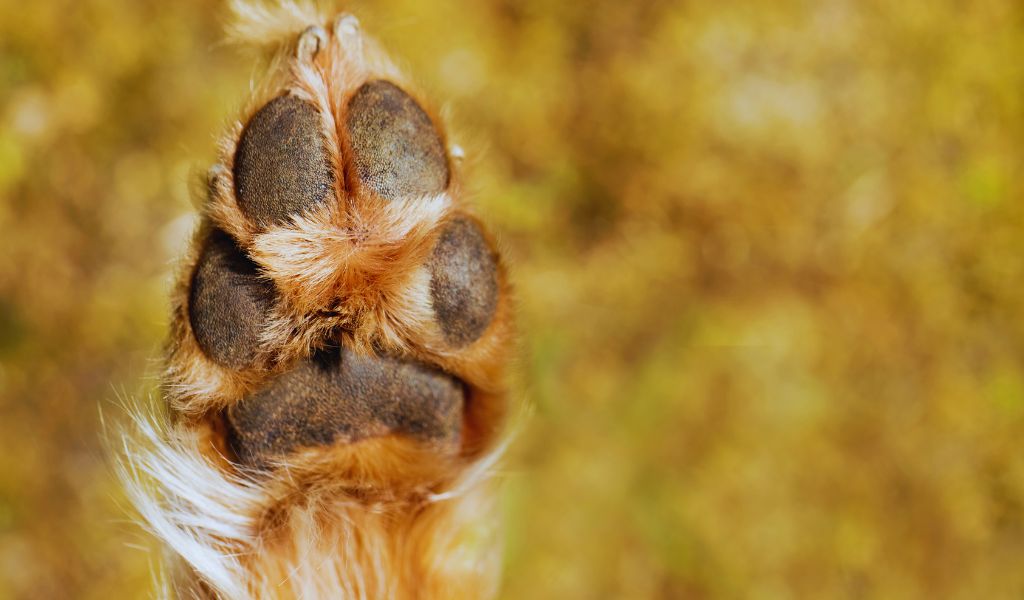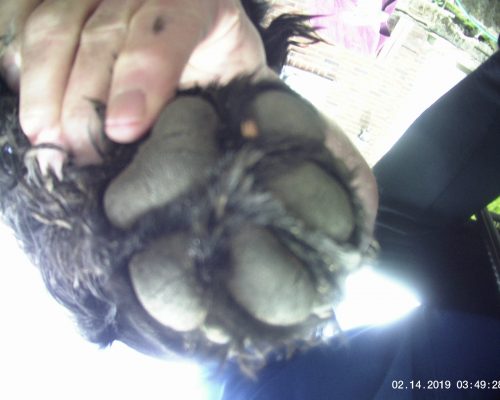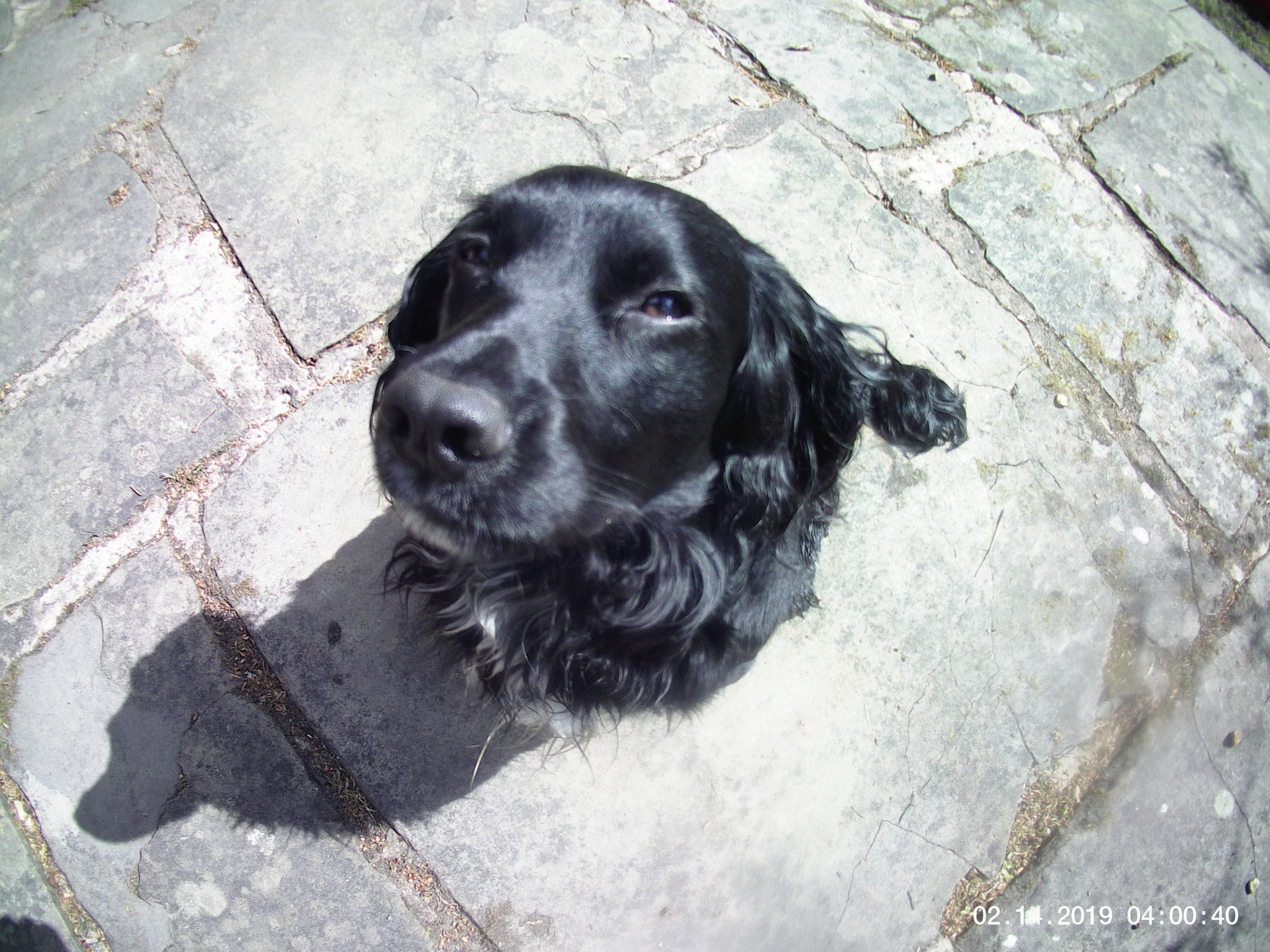Your spaniel’s paws are a key part of his body and paw care is important.
Not only are his paws made for walking but they also protect his bones and joints through the cushioning effect that they provide.
Just like your running shoes cushion your body, his paws work in the same way.
Your spaniel‘s paws are subjected to all sorts of conditions, surfaces and weather and, because they play such an important role, it is important to look after them.
So, we’ve put together our Top Paw Care Tips to help you to keep your dog’s paws in great shape.
- Regular Inspection: Check for cuts, abrasions, or foreign objects regularly.
- Nail Trimming: Keep nails trimmed to avoid discomfort and injury.
- Moisturize Paw Pads: Use pet-safe moisturizers to prevent dryness and cracking.
- Clean Between Toes: Remove dirt and debris to reduce irritation and matting.
- Weather Protection: Protect paws from hot pavement in summer and icy sidewalks in winter.
- Exercise on Soft Surfaces: Prefer grass or other soft surfaces to reduce wear and tear.
- Watch for Allergies: Be alert for signs of allergies, such as excessive licking or redness.
- First Aid Knowledge: Keep a first aid kit handy and know how to treat minor injuries.
Nail Care for spaniels
For many spaniels, excessive nail length can be a problem, particularly for those dogs that spend a lot of time indoors.
In normal day to day life, your spaniel’s claws will naturally wear down as he walks around, runs, digs and does what dogs do.
However, after a while his claws will grow to the stage where they will need clipping to keep them comfortable and under control.
Just like you need to clip your toenails – it’s the same with dogs.
Your spaniel’s claws should just touch the ground when he walks, if you can hear them clipping then that is often a sign that they need clipping.
It is possible to clip your spaniel’s nails yourself and there are clippers available, such as these ones that I found for a great price on Amazon.
You should ask your vet for advice on the best way to clip your dog’s nails or your vet or a dog groomer could do the job for you.

Cleaning between the toes
How many times have you had stones and other foreign bodies lodged in the treads of shoes?
It can be the same for your dog, only in your dog’s case it can be uncomfortable and, if left unaddressed can lead to infections and other problems.
You should check your spaniel’s toes regularly for foreign objects, these can be anything from grass seeds and thorns, through to stones and pieces of glass.
Pay attention to the webbed area, the thin layer of skin between his toes and check carefully for any damage or thorns.
At the same time you could give him a brush to get rid of some of the dead hair that accumulates on his body.
I find that the most common items are thorns and grass seeds, the latter seem to have an ability to pierce the skin between the toes, which can cause quite a lot of discomfort.

Moisturiser for paws
You can use moisturiser on your spaniel’s paws.
This is a job that my daugher does with Boris and Nimrod , my two Cockers, and they seem to enjoy it.
Your dog’s pads can get cracked and dry which again can be uncomfortable for your dog.
There are various moisturisers that are available for your dog’s paws such as these that are available online or you could ask your vet for their recommendations.
We’ve found some suitable ones for you that you can read more about here on Amazon.
Don’t be tempted to use human products on your dog’s paws.
Paw Massage
For a fuller pawicure effect, why not give your dog a paw massage?
Yes , I know it might sound a bit funny but a nice paw massage could be just what your spaniel needs.
Again this is something I tend to leave to the ladies of the house, they seem to be much better at this sort of thing than me and the dogs enjoy the time and the fuss.
Learn some paw first aid
Even if you are really careful where you exercise your spaniel and you inspect his paws regularly, there is a real chance that at some point, he will get an injury to his paw.
He may get a thorn stuck in it, or suffer a cut from glass or other sharp object.
If you are ever in any doubt then you should always consult your vet for advice.
Small injuries can normally be treated at home with a basic first aid kit. Clean any wounds and then protect and cover them with a dressing and a dog boot or thick sock.
Always remember that you vet is available and you should always get their help if your dog suffers a deep cut or large wound, or if you are in any doubt.
Seasonal spaniel paw care
You should be aware of seasonal changes and the impact that these can have on your spaniel’s paws – not just the weather but the consequences of the weather.
Here’s a few examples:
Grit, rock salt, chemical de-icers in winter:
All of these items can get stuck in your dog’s paws, they can cause burning, cracking, cuts, irritation and pain.
You should wash your spaniel’s paws thoroughly if he comes into contact with any of them, removing all traces.
The other reason is that not only can they cause irritation, but it your dog licks his paws then he could ingest them, and, in the case of de-icer, this is toxic.
Snow and ice:
One thing that I notice when it snows if just how much snow and ice gets stuck to a spaniel’s coat, particularly his paws and legs, and it quickly builds up into large clumps.
Keep your spaniel’s toes, paws and legs free of snow and ice when he goes out.
Hot footpaths and other surfaces in summer:
Most of us have had the experience of stepping onto hot sand at a beach during sunny weather and it can be painful.
It is the same for your spaniel, avoid hot surfaces.
Try to take him out in the morning or later in the day when the sun is not as intense, or walk on cooler surfaces, such as grass.
You can get boots for dogs, that can be used in extremes of weather to protect his paws.
This type of equipment is common in cold weather environments and they are widely used to protect the paws of working dogs.
We’ve found some boots that are suitable for spaniels on Amazon which you can read more about here.
Protect your dog’s paws
There are a variety of products that you can get and use on your spaniel’s paws to help to protect them from harsh weather and conditions.
A range of paw waxes are available such as Musher’s Secret, you apply it to your dog’s pads and between his toes. It protects the paws from most environmental hazards.
Your spaniel’s paws are a really crucial part of his life and you should do your best to keep them in great condition.
Regularly check and clean them, and keep his nails short.
Be careful when the weather is hot and cold and be aware that surfaces can be uncomfortable both in terms of temperature and terrain.
If your dog does injure his paws then you can apply some basic first aid but, if in any doubt, always get the professional advice of your vet.
FAQs About Caring for a Spaniel’s Paws
How often should I check my spaniel’s paws for injuries or foreign objects?
You should check your spaniel’s paws at least once a week. Regular inspections help catch any cuts, abrasions, or foreign objects like stones or twigs before they cause serious problems. Additionally, it’s a good habit to check their paws after walks, especially if you’ve been in rough or unfamiliar terrain.
What’s the best way to trim my spaniel’s nails?
To trim your spaniel’s nails, use a high-quality dog nail clipper and ensure you don’t cut too close to the quick, which can cause pain and bleeding. If you’re unsure, it’s best to seek advice from a vet or professional groomer. Regular trims every few weeks can keep your spaniel’s nails at a healthy length.
How can I prevent my spaniel’s paw pads from becoming dry and cracked?
Moisturize your spaniel’s paw pads regularly with a pet-safe balm or moisturizer designed for dogs. Avoid using human lotions as they may contain ingredients harmful to pets. Keeping the paw pads moisturised prevents cracking, which can lead to infections and discomfort.
What should I do if my spaniel’s paws are irritated from hot pavement or icy paths?
If your spaniel’s paws are irritated from extreme temperatures, rinse them with cool or lukewarm water to remove any salt, ice, or debris. Apply a soothing, pet-safe paw balm to help with healing. In the future, consider using dog booties or a protective wax to shield their paws from harsh surfaces.
How can I tell if my spaniel has a paw allergy, and what should I do?
Signs of paw allergies include excessive licking, chewing, redness, and swelling. If you notice these symptoms, consult your vet. They can help identify the allergen and recommend appropriate treatments or dietary changes. Managing your spaniel’s environment and avoiding known allergens can also help prevent flare-ups.




